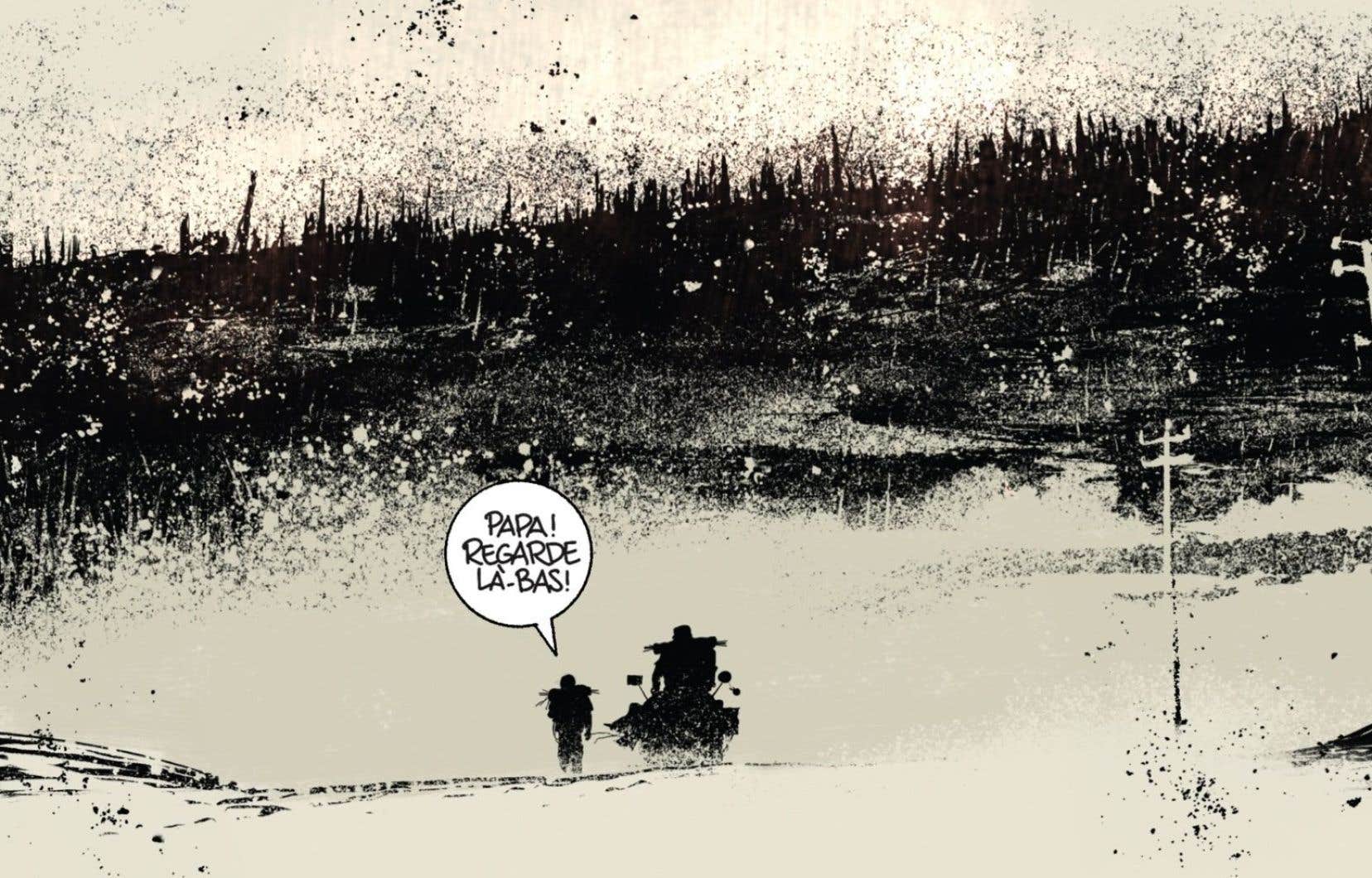No one really comes away intact from reading The roada postapocalyptic novel by Cormac McCarthy published in its original version in 2006. The original story, winner of the Pulitzer Prize for fiction, tells the story of a father and his son crossing on foot a United States devastated by a catastrophe, the origin of which remains unknown, in search of a possible lost paradise. The road was adapted into a film and served as inspiration for a series of video games (The Last of Us), before falling into the eye of Manu Larcenet for a shocking comic strip which demonstrates that it is possible to adapt a work not only without betraying it, but also by appropriating it.
A case of ashes
Of course, Manu Larcenet has a career in pencil. The French author, who celebrated his 55th birthday a few weeks ago, visited Icy fluidbut it is with the series blast, published from 2009, which it is dedicated. So, where does this idea come from to adapt into a comic strip what, for many, may seem unadaptable?
“What I liked about this novel, when reading it, was the ashes. For another series, Brodeck’s report, which is also an adaptation of novels by Philippe Claudel, I had studied rain, residual humidity, oozing walls and all that, and I loved it. And there, the fact that everything was covered in ashes spoke to the designer that I am. So, my first contact with my desire, it is totally graphic. Obviously, too, the book has to speak to me and what I particularly liked about this one was that there was no traditional narrative arc, it was a collage small scenes. »
And what is the relationship between Cormac McCarthy, his work and Larcenet? Is he already a fan of the author before even reading? The road ? “So here, I’m almost a little ashamed, but I didn’t know McCarthy that much. I knew No Country for Old Men and, according to what my wife reminded me, I had also seen the adaptation of The road in film, but I didn’t have that many memories of it. I had started another project for which, in the end, we did not obtain the rights and I read The road in two days, at the hotel, when I went to see my editor in Paris, and the decision to adapt it came to me very quickly. Then, I had to write a cover letter to the publisher of the novel, which I never do, because there seemed to be several of us involved, and things fell into place. And I don’t really think that McCarthy, who was still alive at that stage, read or approved of anything, given that he lived a bit of a hermit. »
Obviously, to adapt is to choose, it is to rework. What interests Manu Larcenet in this process? Does he keep what he wants to tell, or what he wants to draw? “Clearly, it’s what I want to say that takes precedence. The pleasure of drawing is in destruction, in ashes; in drawing halves of characters because they are in the fog. In fact, I read the novel page by page and I decide what I want to keep and, often, what motivates me is to draw what seems impossible to transpose. And I made choices, I chose despair, which is why I don’t have quite the same ending as the original. There are also, in the novel, things that are showable and others that are not. They are only evocable. And for that, I use silence boxes a lot. »
In shades of gray
One thing that stands out without being noticed is the absence of color in the drawing, which goes much further than simple black and white. It took us a few pages before we understood that Manu Larcenet used not only tones of gray, but lightly colored tones, which gives the album a character of gentle violence. “I really started by working on the album in color, before realizing that it really wasn’t working. It was too harmonious, almost joyful. It was while playing with saturation on the computer that I realized that colored grays supported the tone I wanted to give to the whole. In black and white, it’s too contrasty, too violent. Yes, there is violence, in The road, but only in small amounts. »
In addition to the tones of gray, there is this precise line which evokes the engraving, which recalls, like the black and white photo, another era. “As there isn’t a lot of text, I wanted the reader to still take their time, to get lost in the drawing. And, on my work table, I had two collections of engravings by Gustave Doré and Albrecht Dürer, and it made me want to contemplate, in addition to discussing the use of noble materials in architecture. As we do not really know the temporality of The road, the use of a style close to engraving adds to this impression of being out of time. It bothers me when my wife reads one of my albums in 10 minutes. Yes, it’s doable when you just focus on the text, but I really wanted you to take the time to get lost in the boxes. »
And it’s a totally successful docking mission. So much so, in fact, that Manu Larcenet also signed the illustrations for a special version of the novel, published by Points. In short, an encounter between a work and a creator as rarely happens, a creative dialogue of high quality which risks becoming a school. A must read.
